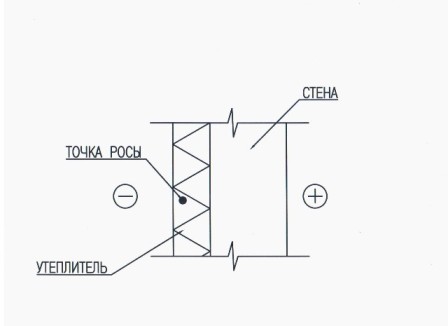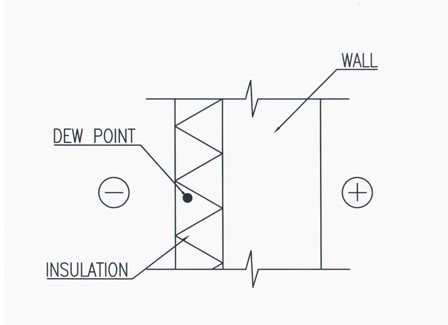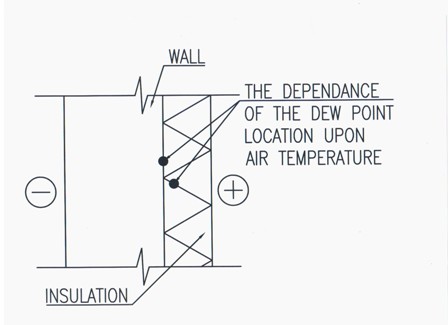Cold, poor insulation and condensation appearing on the walls or ceilings are forcing the tenants to install the insulation inside.
In order to explain why it is not recommended to insulate the structures (walls, ceilings) inside the premises, it is necessary to understand the processes occurring in the construction due to the temperature and humidity changes both outside and inside the building. To start with, let’s consider such therm as a “dew point”.
“Dew point” is the temperature condition during which the vapor in the air turns to water. The dew point depends highly on the thermal conductivity of the structure.
Depending on the location of the “dew point” (further or closer to the wall thickness of the inner room) the wall from the inside can be dry or wet.
The higher the humidity in the room, the higher is the dew point and closer to the actual temperature of the indoor air.
For example, if the indoor temperature is 20°C and the humidity is 60%, then on any surface with a temperature below 12°C there will appear condensate.
The lower the humidity, the lower the dew point is, compared to the actual temperature of the air indoors. For example, if the indoor temperature is 20°C and the humidity is 40%, then on any surface with a temperature below 6°C will appear condensate.
Condensation occurs not only due to the moisture indoors. Inside any structure there is present air, therefore, at a certain temperature, inside the structures condensation takes place as well.
Formation and location of the “dew point” inside the constructions depend on:
– The thickness and location of the insulation.
– The temperatures inside and outside of the building.
– Humidity inside and outside the room.
Let’s consider some examples of the arrangements of the dew point in the structure, depending on the location of the insulation:
As can be seen from the Figure 3, the insulation inside gives only a visual effect – we got rid of the cold, but the condensate has accumulated on the inner surface of the insulation.
We only have moved the “dew point” closer to the inside of the structure. This means that the wall behind the insulation will constantly be wet. If there was used mineral wool as an insulation, it would be getting wet.
If the insulation material used was polystyrene, it would remain dry, however it does not change the essence, as the increased moisture inside the wall is a favorable environment for the formation of the fungus and mold, as well as it contributes to the rapid corrosion of the metallic elements (panels, welded joints, valves, etc.), which eventually leads to the structural damping.
From everything mentioned above it can be concluded that a safe and an effective insulation can only be the thermal insulation outside the construction.
Anton Slepuhin
Director of the enterprise OÜ Ehituskonsult Grupp




